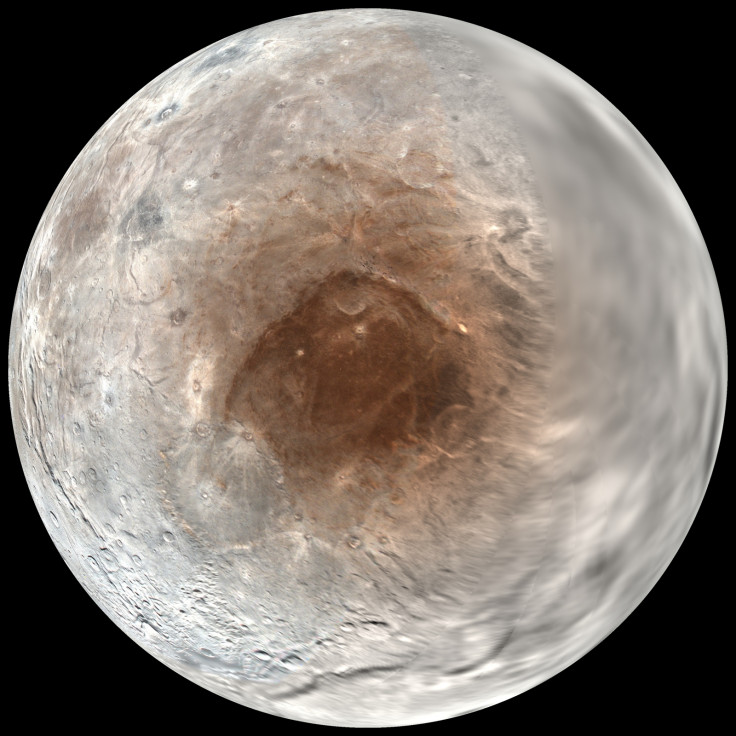Why does Pluto's moon have a red polar cap? Scientists solve mystery of Charon's colour
Charon's unique feature may be the result of trapped methane escaped from Pluto's atmosphere.

Pluto's moon Charon has a distinctive dark red northern polar cap, and this could be caused by trapped gas, scientists have revealed. Their hypothesis is that this gas may be methane escaped from Pluto's atmosphere, which was then captured by Charon due to extremely low temperatures.
This theory that methane from Pluto has been transiently cold-trapped and processed at Charon's pole, before slowly being converted into red-coloured material, has long been debated by scientists.
While it seemed to be the most plausible explanation, no models had up to now been created to support it.
In this study, published in the journal Nature, scientists have analysed images from the New Horizons mission - which had the primary aim of collecting data to understand the formation of the Pluto system, the Kuiper belt, and the transformation of the early Solar System.
The researchers have also modelled for the first time the evolution of the ice cap, to try and explain the formation of Charon's unique red cap.
Modelling the formation of 'red material'
The team, led by Will Grundy from the Lowell Observatory in Arizona, used New Horizons images of Charon's southern hemisphere illuminated by Pluto-shine as well as images taken during the approach phase, which reveal views of the northern polar cap over a range of longitudes.
Thanks to this data and to Pluto and Charon's known orbits around the Sun, they modelled the surface thermal environment on the satellite and the cold-trapping of material escaping from Pluto.
Their work demonstrates that Charon's north pole has experienced long winters with continuous extremely low temperatures – cold enough to trap methane that has escaped from Pluto's atmosphere. These long, cold seasons last for more than 100 years at a time.
The gas trapped at the pole was then able to develop into red-coloured chemicals when the pole emerged into sunlight. These models thus confirm the long-held scientific view that cold temperatures at Charon's northern pole played a part in the formation of the dark red northern polar cap.
© Copyright IBTimes 2024. All rights reserved.






